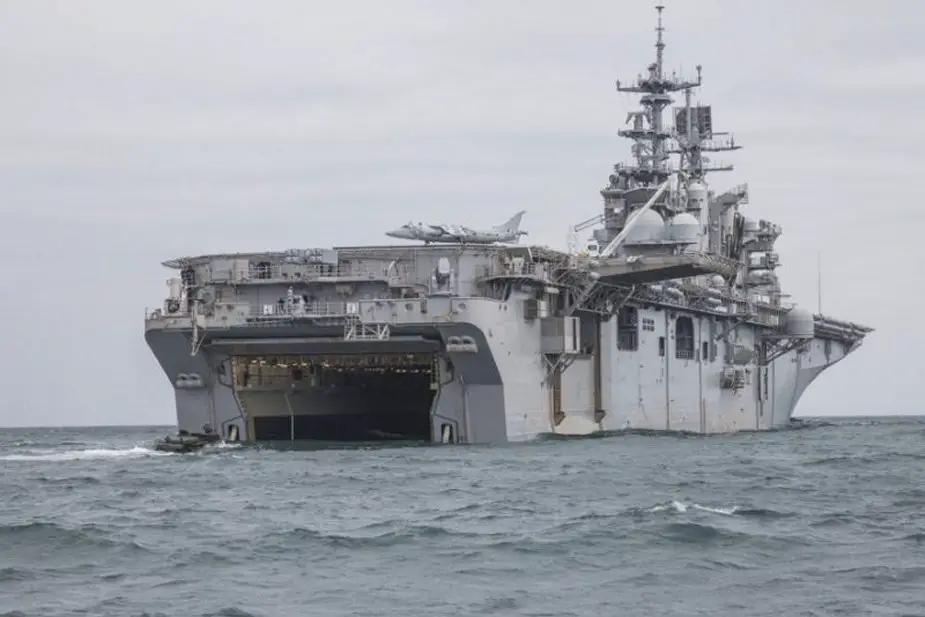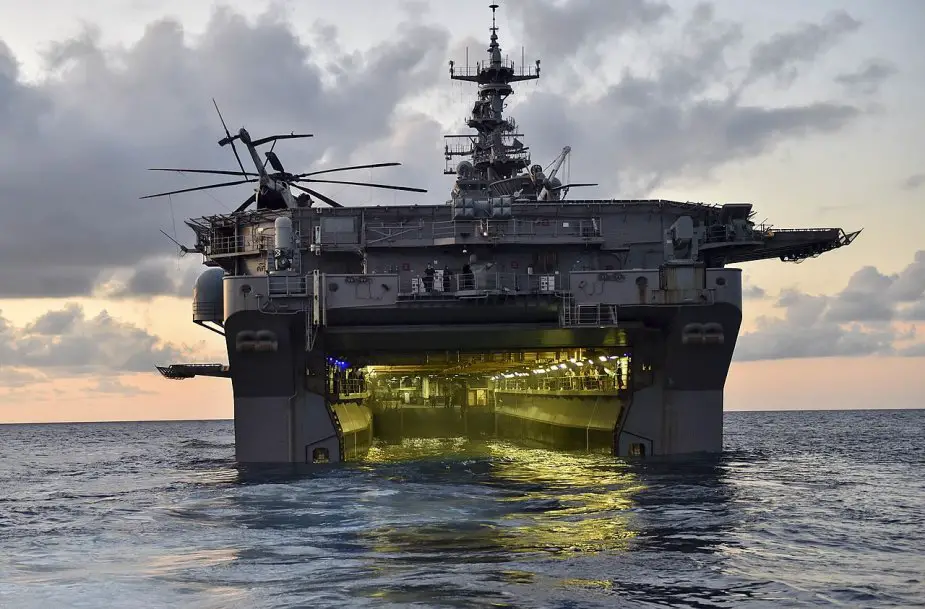Breaking news
Report to Congress on US Navy Light Amphibious Warship.
The Navy’s new Light Amphibious Warship (LAW) program envisions procuring a class of 28 to 30 new amphibious ships to support the Marine Corps, particularly in implementing a new Marine Corps operational concept called Expeditionary Advanced Base Operations (EABO).
Follow Navy Recognition on Google News at this link
 An amphibious assault vehicle enters the well decks of the amphibious assault ship USS Bataan (LHD-5) (Picture source: US navy)
An amphibious assault vehicle enters the well decks of the amphibious assault ship USS Bataan (LHD-5) (Picture source: US navy)
From the report
The Navy’s proposed FY2021 budget requests $30 million in research and development funding for initial industry studies and concept design work on the ship. The Navy envisions procuring the ships on an expedited schedule, with the first LAWs potentially being procured in FY2023 and a total of 28 notionally being procured by FY2026.
The EABO concept was developed with an eye toward potential conflict scenarios with China in the Western Pacific. Under the concept, the Marine Corps envisions, among other things, having reinforced-platoon-sized Marine Corps units maneuver around the theater, moving from island to island, to fire anti-ship cruise missiles (ASCMs) and perform other missions so as to contribute, alongside Navy and other U.S. military forces, to U.S operations to counter and deny sea control to Chinese forces. The LAW ships would be instrumental to these operations, with LAWs embarking, transporting, landing, and subsequently reembarking these small Marine Corps units.
As conceived by the Navy and Marine Corps, LAWs would be much smaller and individually much less expensive to procure and operate than the Navy’s current amphibious ships. The Navy wants LAWs to be 200 to 400 feet in length, and to have a unit procurement cost to be “several digit millions not triple-digit millions,” a phrase that might be interpreted to mean a unit procurement cost of less than $100 million, or perhaps one that is closer to $100 million than to several hundred million dollars.
 The amphibious assault ship USS Iwo Jima (LHD 7) as seen from Landing Craft Unit 1643, attached to Assault Craft Unit (ACU) 2 (Picture source: U.S. Navy photo by Mass Communication Specialist Seaman Michael Lehman/Released)
The amphibious assault ship USS Iwo Jima (LHD 7) as seen from Landing Craft Unit 1643, attached to Assault Craft Unit (ACU) 2 (Picture source: U.S. Navy photo by Mass Communication Specialist Seaman Michael Lehman/Released)
The LAW as outlined by the Navy is small enough that it could be built by any of several U.S. shipyards. The Navy states that in response to an initial request for information (RFI) about the LAW, it received responses from 13 firms, including nine shipyards. The Navy’s baseline preference is to have a single shipyard build all 28 to 30 ships, but the Navy is open to having them built-in multiple yards to the same design if doing so could permit the program to be implemented more quickly and/or less expensively.
The LAW program poses a number of potential oversight matters for Congress, including the merits of the EABO concept, how LAWs would fit into the Navy’s future fleet architecture, the Navy’s preliminary unit procurement cost target for the ship, and the industrial-base implications of the program.
The issue for Congress is whether to approve, reject, or modify the Navy’s FY2021 funding request and envisioned an acquisition strategy for the program. Congress’s decisions regarding the program could affect Navy and Marine Corps capabilities and funding requirements and the U.S. shipbuilding industrial base.


























